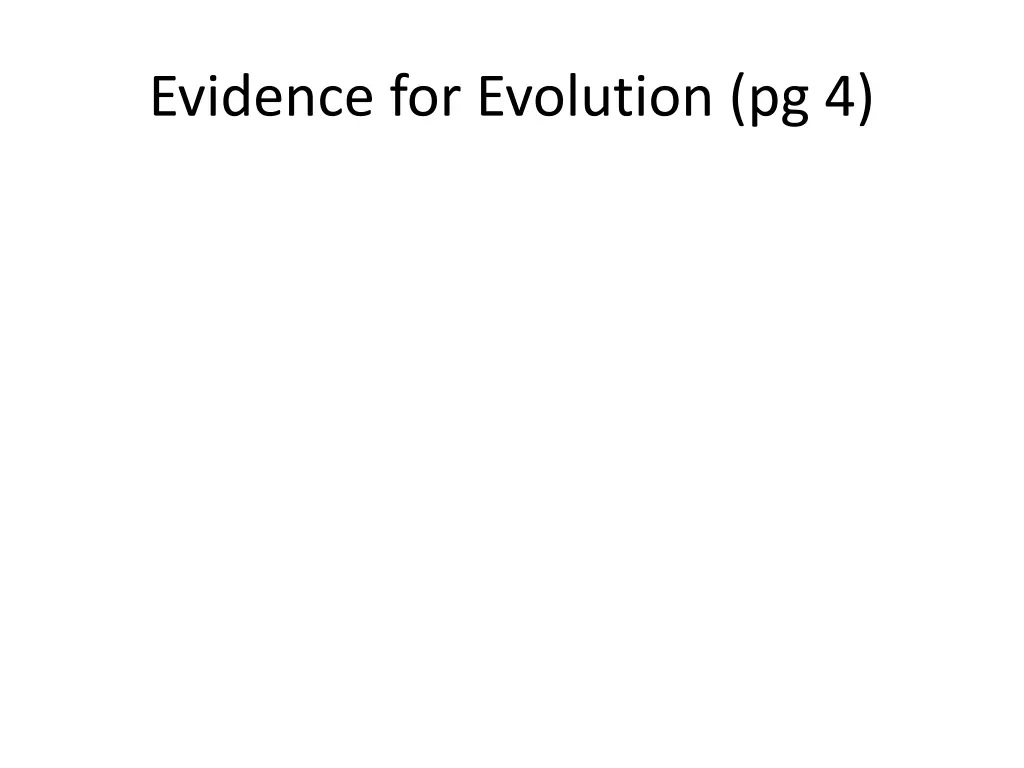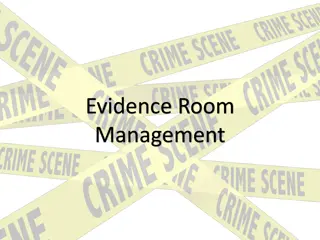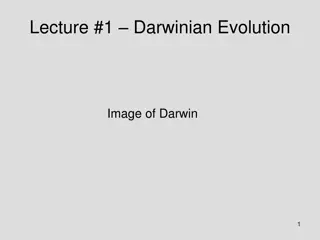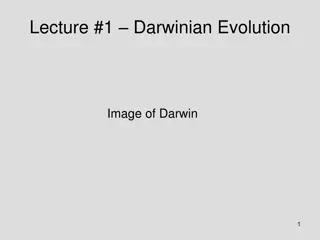
Evidence for Evolution: Fossil Record, Comparative Anatomy, Vestigial Structures, Embryology
Explore evidence for evolution including the fossil record showing intermediate forms, homologous structures in comparative anatomy, vestigial structures in various species, and similarities in animal embryos during early development. These examples highlight the interconnectedness of species and support the theory of evolution.
Download Presentation

Please find below an Image/Link to download the presentation.
The content on the website is provided AS IS for your information and personal use only. It may not be sold, licensed, or shared on other websites without obtaining consent from the author. If you encounter any issues during the download, it is possible that the publisher has removed the file from their server.
You are allowed to download the files provided on this website for personal or commercial use, subject to the condition that they are used lawfully. All files are the property of their respective owners.
The content on the website is provided AS IS for your information and personal use only. It may not be sold, licensed, or shared on other websites without obtaining consent from the author.
E N D
Presentation Transcript
Evidence for Evolution (pg 4) 1. Fossil record: Fossils show evolutionary changes and intermediate forms
2. Comparative Anatomy: Species that are closely related share homologous structures
2. Comparative Anatomy: Species that are closely related share homologous structures Example: The forelimbs of mammals all share the same basic bone structure
2. Comparative Anatomy: Species that are closely related share homologous structures Example: The forelimbs of mammals all share the same basic bone structure
2. Comparative Anatomy: Species that are closely related share homologous structures Example: The forelimbs of mammals all share the same basic bone structure
Diagram (pg 5) Comparative Anatomy handout: color code
3. Vestigial structures = body structures that have lost their primary function
3. Vestigial structures = body structures that have lost their primary function Example: Hind limbs in whales and snakes
3. Vestigial structures = body structures that have lost their primary function Example: Hind limbs in whales and snakes Human Examples: Appendix, Tailbone, Goose bumps
4. Comparative Embryology: In early stages, all animal embryos look alike, suggesting common ancestry
4. Comparative Embryology: In early stages, all animal embryos look alike, suggesting common ancestry Example: Young human embryos have gill slits and a tail






















